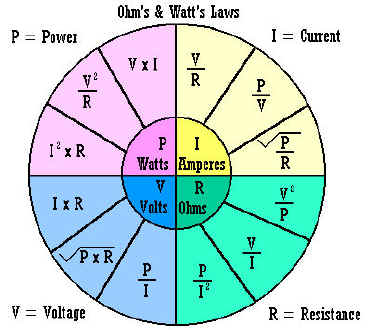Alright Folks,
I recently picked up "The Art of Electronics" by Horowitz and Hill and I am currently stumped on a particular exercise. I've tried to figure this out for two days now and I have no clue as to what I am supposed to do. My only complaint about this book is that there doesn't seem to be an answer key for the exercises that they have in the book.
Exercise 1.5 found on page 7.
Show that it is not possible to exceed the power rating of a 1/4 watt resistor of resistance greater than 1k, no matter how you connect it, in a circuit operating from a 15 volt battery.
I'm trying to teach my self about electronics and I am a complete noob when it comes to this stuff. I have a degree in English, which I feel is about as far from this type of subject matter as can be.
I was able to figure out the power dissipated in an earlier question but this one completely bamboozles me. Everything I have read up until this point in the text describes resistors as "5k" or "10k" resistor and I really don't understand where the wattage came into play.
Thanks in advance for your help and I apologize if this is an off the wall question to be asking here.
-Pete
I recently picked up "The Art of Electronics" by Horowitz and Hill and I am currently stumped on a particular exercise. I've tried to figure this out for two days now and I have no clue as to what I am supposed to do. My only complaint about this book is that there doesn't seem to be an answer key for the exercises that they have in the book.
Exercise 1.5 found on page 7.
Show that it is not possible to exceed the power rating of a 1/4 watt resistor of resistance greater than 1k, no matter how you connect it, in a circuit operating from a 15 volt battery.
I'm trying to teach my self about electronics and I am a complete noob when it comes to this stuff. I have a degree in English, which I feel is about as far from this type of subject matter as can be.
I was able to figure out the power dissipated in an earlier question but this one completely bamboozles me. Everything I have read up until this point in the text describes resistors as "5k" or "10k" resistor and I really don't understand where the wattage came into play.
Thanks in advance for your help and I apologize if this is an off the wall question to be asking here.
-Pete
You need to remember P=V*I, and I=V/R
So, that gets you P=V*V/R
If V is 15 volts, R is 1k (1000 ohms), then it is:
P = 15 * 15 /1000 = 225/1000 = 0.225 Watts which is less than 1/4 watt.
Maybe you should get a book that covers basic electrical concepts like Ohm's Law in greater depth first.
So, that gets you P=V*V/R
If V is 15 volts, R is 1k (1000 ohms), then it is:
P = 15 * 15 /1000 = 225/1000 = 0.225 Watts which is less than 1/4 watt.
Maybe you should get a book that covers basic electrical concepts like Ohm's Law in greater depth first.
Show that it is not possible to exceed the power rating of a 1/4 watt resistor of resistance greater than 1k, no matter how you connect it, in a circuit operating from a 15 volt battery.
The 15volt battery can also be used to make a DC to DC converter. If the output voltage is increased, and THE resistor is connected in the output ckt...
This statement is not always true.
Gajanan Phadte
Here's a calculator:
http://www.doctronics.co.uk/downoeq.htm
from
http://baec.tripod.com/
Print this and keep handy:

From:
http://101science.com/Radio.htm
Syd
http://www.doctronics.co.uk/downoeq.htm
from
http://baec.tripod.com/
Print this and keep handy:

From:
http://101science.com/Radio.htm
Syd
Pete,
The simple way I remember Ohm's law, which will get you the info you need in this case is using these towo diagrams:
. E .
I | R
. P .
I | E
E= voltage, I= current (amps), R= resistance (ohms), P=power (watts)
Between those two diagrams, I can usually come up with whatever measurement I'm looking for. Hope this helps and best wishes in your endeavor.
Mike
The simple way I remember Ohm's law, which will get you the info you need in this case is using these towo diagrams:
. E .
I | R
. P .
I | E
E= voltage, I= current (amps), R= resistance (ohms), P=power (watts)
Between those two diagrams, I can usually come up with whatever measurement I'm looking for. Hope this helps and best wishes in your endeavor.
Mike
Thanks everybody for your help. I understand now how to solve the problem.
I also have another book coming in the mail, which is about basic electricity concepts so I might start with that one and then return to "The Art of Electronics." Thanks again for your time.
-Pete
I also have another book coming in the mail, which is about basic electricity concepts so I might start with that one and then return to "The Art of Electronics." Thanks again for your time.
-Pete
- Status
- Not open for further replies.